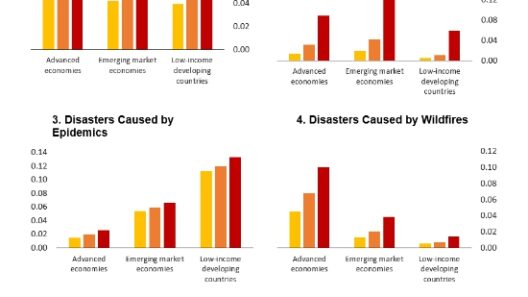The relationship between altitude and climate is a fascinating phenomenon that has long captivated scientists, researchers, and environmental enthusiasts alike. As one ascends above sea level, the atmospheric conditions change dramatically, demonstrating the intricate interplay between topography and weather patterns. But does altitude really affect climate? To grasp the full extent of this question, let us delve deeper into the multifaceted influences that elevation brings to our world.
As a general principle, temperature tends to decrease with an increase in altitude. This trend can be attributed to the thinning of the atmosphere. At lower altitudes, the air is denser, which facilitates heat retention. As altitude increases, the air becomes less dense, leading to a lower capacity to hold heat. This phenomenon is observable in mountainous regions where, despite being closer to the sun, temperatures can plummet when compared to the valleys below. For every kilometer one ascends, temperatures generally decrease by approximately 6.5 degrees Celsius; this rate is referred to as the lapse rate. Such a consistent decrease opens a myriad of climatic variations within relatively short distances.
Humidity is another vital factor that impacts the climate as one climbs higher. Generally, the capacity of air to retain moisture decreases with altitude. Consequently, areas at higher elevations often experience lower humidity levels. This decline in moisture availability affects not only the temperature but also the types of vegetation and ecosystems that can thrive. Forests may yield to alpine tundra as elevation rises, showcasing a staggering transition in biodiversity. These ecosystems are often fragile and uniquely adapted to the specific climatic conditions they encounter.
Furthermore, the concept of orographic precipitation elucidates how altitude can dictate rainfall patterns. When moist air ascends a mountain range, it cools and condenses, leading to cloud formation and precipitation. This principle explains why the windward sides of mountain ranges often receive copious amounts of rain, while the leeward sides—referred to as rain shadows—can experience arid conditions. This disparity profoundly influences local climates, shaping agricultural practices, water supply, and overall environmental health.
The impact of altitude on climate extends beyond mere temperature and precipitation; it also affects wind patterns. Higher elevations can experience increased wind velocities owing to the relative lack of obstructions found in lower areas. These winds can lead to cooler conditions and influence the dispersal of seeds, pollen, and even pollutants across vast distances. As we ponder the significance of these winds, it is essential to recognize their role in producing localized climatic phenomena, such as microclimates, which can exhibit characteristics distinctly different from surrounding regions.
Interestingly, altitude not only influences climate on a local scale but also contributes to global climatic patterns. For instance, the vast Himalayan mountain range affects monsoon patterns across the Indian subcontinent. The height of these peaks alters wind systems, leading to significant seasonal changes. Such elevated terrains can act as climatic barriers, demonstrating the profound interconnectedness of Earth’s physical geographies with climatic behavior.
Moreover, the effects of climate change are often exacerbated at higher elevations. Glacial melting is one visible consequence of rising global temperatures, dramatically reshaping mountain ecosystems. Elevation gradient changes can lead to the disappearance of snow cover, altering water supplies for both human populations and local wildlife. As we see glaciers retreating, we must consider the downstream impacts, including higher events of floods, shifts in hydrological cycles, and increased risks to biodiversity.
Notably, altitude can also influence human health and wellbeing. People living at high elevations often adapt to lower oxygen levels, leading to physiological changes known as acclimatization. However, these changes can pose challenges for newcomers who are unaccustomed to the thin air. The risk of altitude sickness, characterized by symptoms such as headaches, nausea, and dizziness, is a real concern for travelers venturing into high-altitude environments.
In contemplating the influence of altitude on climate, one must not overlook the socio-economic factors intertwined with this dynamic. Communities situated in elevated areas may face unique economic challenges linked to their geographical isolation and climate-dependent resources. Agriculture at higher altitudes often demands specialized techniques to account for shortened growing seasons and varying precipitation patterns. This necessity for adaptation calls for innovative agricultural practices that respect the local environment while also catering to the changing climatic paradigm we face globally.
In conclusion, altitude plays a pivotal role in shaping the climate, demonstrating a complex relationship characterized by temperature changes, humidity variations, and the manipulation of precipitation patterns. As we venture higher into the atmosphere, the transitions encountered are not only physical but also deeply interwoven into the fabric of our ecosystems, human societies, and even our health. The intricate interplay of these variables underscores the importance of acknowledging altitude’s climatic influence as we face unprecedented environmental challenges. An understanding of this relationship provides the groundwork for appreciating the delicate balance that sustains both natural and human life on our planet. Embracing the knowledge of altitude, therefore, not only promises a shift in perspective but also piques our curiosity about the true power of Earth’s diverse landscapes. Whether traversing a mountain trail or pondering the complexities of global climates, the question remains: how do we adapt and respond to the climatic realities dictated by the elevations we encounter?




